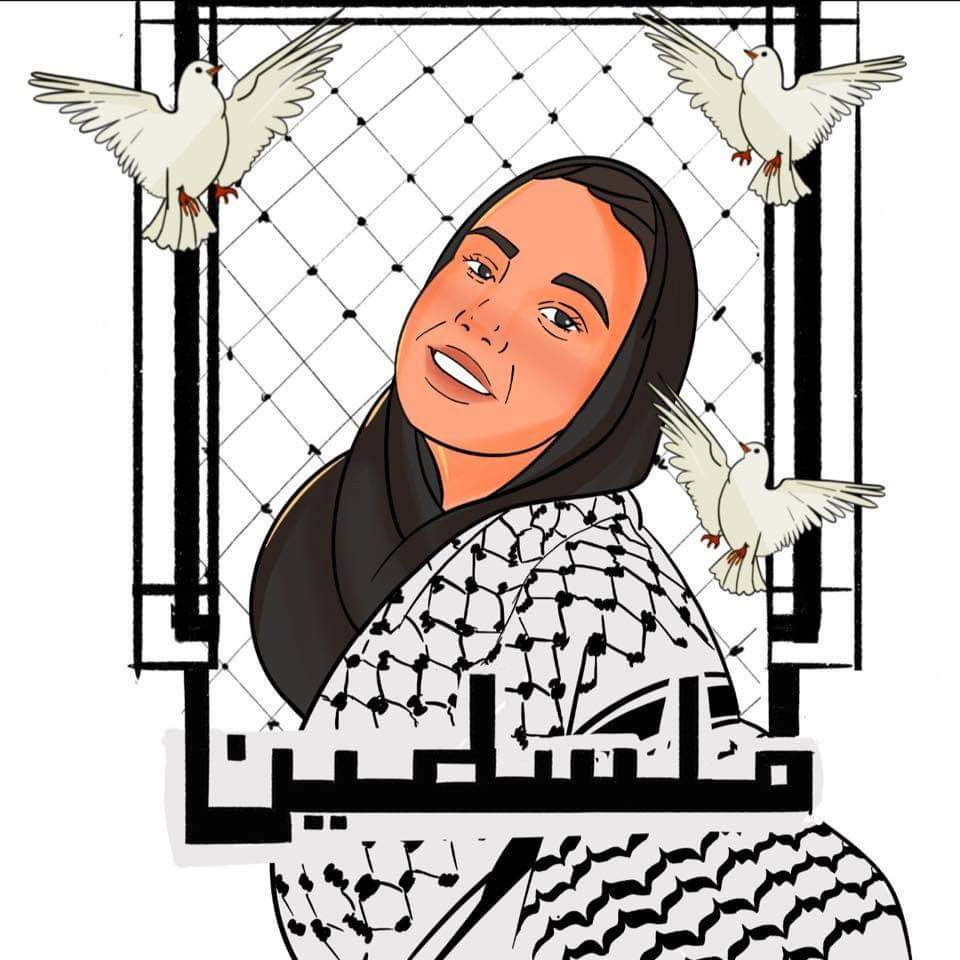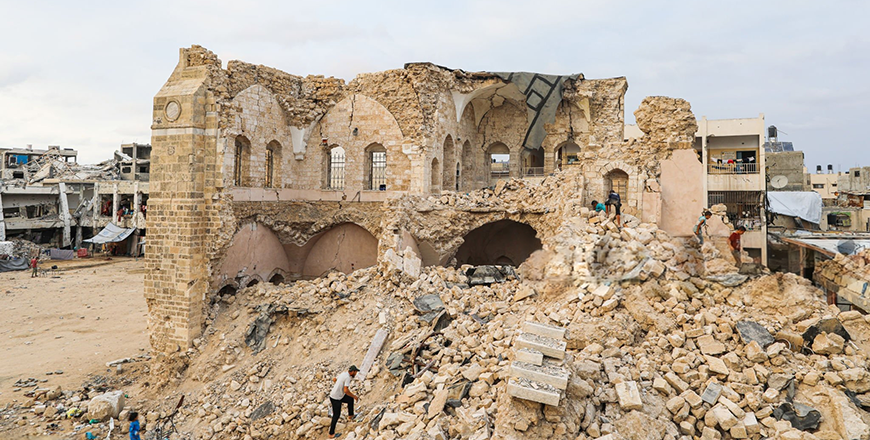
Words that didn’t last for long because of the pounding Israeli warplanes that seeks to end anything called Gaza, Palestine and Palestinians.
The young woman always tried to stay cheery and alive. But her death was always to be expected as she was killed by an Israeli missile that pulverized her home.
She finally become a martyr with her family in indiscriminate Israeli military strikes on the Jabalia Camp, northern Gaza on 18 October, 2024. The camp has been under constant bombardment for the last two week. This is the third time the Israelis tried to enter the camp in a year-long onslaught.
Artist and painter Mahasen Al Khatib life was cut too short by a merciless, blinded Israeli war on defenseless civilians while world leaders look on with hands tied behind their backs.
Today she stands as the owner of the “famous chicken” videoclip in which she documented the happiness of her brother when they managed to get a chicken after months of eating leaves on a starvation diet.
She watches her brother playing with the dead naked, meat, laughs and asks:
“How are we going to cook it…?”
“Magloba…[Arabic dish with rice and vegetables,” comes the reply.
“How about roasting yet,” she interjects.
“Yes, that would be great too.”
Oh, I know, how about boiling it,” she wounders as if this is a great festive occasion.
“Yes, that too would be nice,” with the eyes of her little brother lighting up.
‘Or, what about cutting it, or even stuffing it?”
She made the videoclip on 9 August, 2024. Little did she know would be at the end of an Israeli two months later.
Mahsen drew with her pencils the heinous conditions of the people of Gaza that have been unrelenting in an Israeli genocide of death and destruction.
Her last post was on Facebook of a youth being burnt alive. His name was Shabaan Al Dalo.
He was burnt alive in a tent outside the Al Aqsa Martyrs Hospital on 14 October, 2024.
“How do feel when you see any person burned alive,” she wryly commented a few days later.
Mahasen Al Khatib established Rawasi Palestine Foundation for Culture, Art and Media.
Palestine and Gaza lost a creative personality. She sought to communicate the merciless, ungodly heartache of the people whose lives have long been turned upside down. She wanted to send a message to the world in a clever way about the tragedies of Gazans through her artistic works.
Mahasen left us with a creative, national heritage that sought to fight ethnic cleansing and presented us with immense digital works that expressed our wounds, devastation and hopes for an end to the massacres and killing.
The artist was firm against people leaving their homes. She and her family stood against displacement and fought it tirelessly through her works that depicted the harsh realities in a caricaturist, funny manner which she published on her social media accounts.
“God sends us a chicken after long months…thanks be to God, she says….It was a chicken for eight people and I ate a part of it,” she emphasized.
The social media became alert when news of her martyrdom was announced.
Mohammad Saeed wrote: “The martyr Mahasen Al Khatib documented for us the moment the flour arrived at their home after months of hunger and eating tree leaves. She also documented the arrival of the first chicken for her entire family after many months of absence. She stood firm in Jabalia and didn’t move. Mahasen was martyred tonight in a violent shelling in Jabalia camp. Remember her in your prayers…”
In another post that included a video of the fire, Mahasen wrote, “We saw people burning, we saw people with no one helping, we saw people dying in front of our eyes… May God have mercy on us.”
From Joy to Martyrdom
Over the past years, Mahasen Al-Khatib has spread joy through her artwork. Even in the darkest moments, she would draw a smile by publishing her family’s daily life under the bombing and harsh conditions of war. However, the last thing the Palestinian artist published before her martyrdom carried a lot of pain, which she described as “difficult nights,” according to Al Jazeera.








